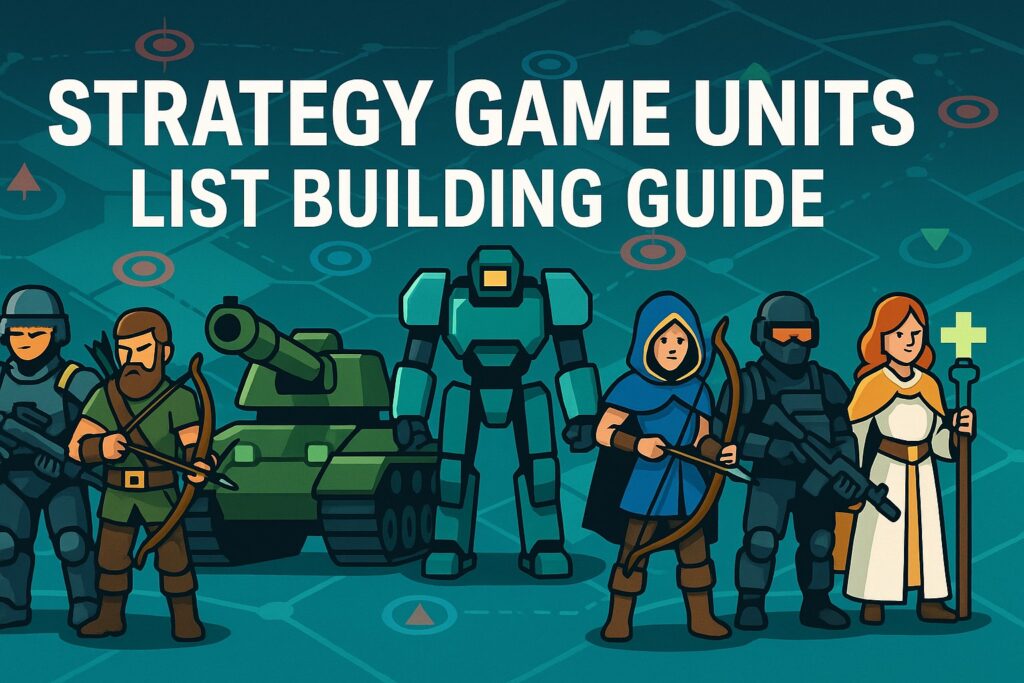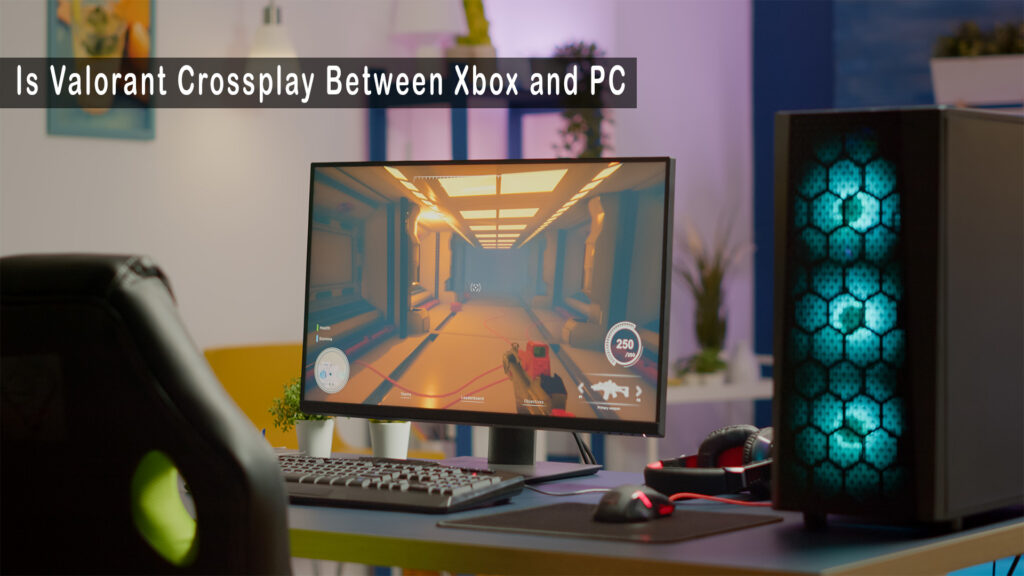Winning in a strategy game takes more than quick clicks or fast decisions. It needs smart thinking, clear planning, and the right mix of units. Whether you play real-time battles or turn-based wars, your unit list shapes the outcome.
Many players focus only on speed or power. They forget balance. They rush in with strong attacks but fall when defense breaks. Others build large armies with no support units. These mistakes cost matches. You need to plan each list with care.
A strong unit list gives you control. It helps you push, defend, and adapt. It works in any game mode—ranked, campaign, or skirmish. You win more when your army works together.
This guide will show you how to build smart unit lists in strategy games. You will learn what to pick, when to pick it, and why each unit type matters. These tips work in most major games, no matter your style or skill.
What Is a Unit List?
A unit list is the group of troops, vehicles, or tools you bring into battle. Every strategy game uses this idea. You may control knights, tanks, archers, ships, or robots. Some games give you full control. Others limit choices based on time, points, or tech.
The unit list is your army. You build it before the battle or during the game. Some games let you plan ahead. Others let you react. Either way, your list needs structure.
A good list covers more than attack. It should include defense, support, and utility. It should let you respond to changes. You must think ahead and prepare for anything.
The Core Roles in a Strategy Army
Every strong unit list covers different roles. These roles give your force balance and purpose. Each role plays a part, and missing one can leave you weak. Let’s break down the main roles you need in most strategy games.
Frontline Units
Frontline units stand at the front and face the enemy first. Their job is to absorb damage, block advances, and draw attention. Swordsmen, heavy infantry, tanks, and armored robots all belong here. You put these units between your enemy and your weaker troops. Their armor or shields let them last longer under fire.
A good frontline lets you hold ground. You can push forward or hold tight in defense. Frontline troops buy time so your other units can act. Without them, your army will break too soon.
Ranged Units
Ranged units stay behind the front. They attack from far away, using bows, guns, or cannons. Archers, snipers, artillery, and missile troops are in this group. They do not need to get close, so they avoid direct hits.
Ranged units deal steady damage. They break tough enemies before those can reach you. These units are easy to lose if left open, so keep them behind your tanks or walls. Good placement keeps them safe and deadly.
Fast Movers
Speedy units change the pace of the fight. They move quickly to scout, flank, or attack weak spots. Horses, light vehicles, bike squads, or stealth troops are common in this group. You use them to explore the map, spot enemy plans, or raid unprotected areas.
Fast movers force your opponent to react. They create panic, cut off retreat, or chase down key targets. Their speed comes at the cost of armor, so use them smartly and avoid big battles.
Support Units
Support units do not always fight on the front line. They help your army survive and grow stronger. Medics heal wounded units. Engineers fix vehicles or build defenses. Aura units give boosts, like faster speed or stronger attacks, to nearby allies.
Support units turn small armies into tough ones. Their work happens in the background, but it wins games over time. Keep them safe, as they are often targets for smart enemies.
Special Units
Special units bring unique power to your list. These may be spellcasters, giant mechs, flyers, or siege engines. Some break walls, others launch surprise attacks, and a few turn the tide with one move.
You cannot replace special units with basic troops. Use them at the right moment for a strong effect. They can finish games or help you recover from a tough spot. Guard them well, because losing one can cost you big.
Know Your Game Before You Build
Every strategy game has its own rules. You cannot pick the same units for every match. A list that wins one battle may fail in another. Some games reward quick moves. Others reward solid defense or smart use of the map. You must know what works before you build your army.
Ask yourself key questions. What is the goal of the game? Some games need you to defeat all enemies. Others ask you to score points, capture zones, or hold ground. Your goal tells you which units to pick.
Study the map or terrain. Open fields suit fast or long-range units. Tight spaces help tanks or slow, strong troops. Water, hills, and forests change how you use your army. Pick units that match the ground.
Check how many units you can use. Some games limit the number or use a point system. Know your max so you do not run out of space or points.
Tech and upgrades also matter. Can you unlock better units? Do upgrades help more than adding new troops? Sometimes a cheap unit with an upgrade works better than an expensive one.
Learn the rules. Study how units support each other. Some heal or shield. Some break armor. Check stats like health, attack, cost, and speed. This knowledge helps you build a team that can handle any challenge.
Good planning starts before the match begins. The more you know, the better your list will be.
How to Balance Your Unit List
A smart unit list needs the right mix. Balance gives you options and keeps you ready for anything. If you stack too many heavy units, your army moves slow and becomes easy to flank. If you fill your list with only weak troops, you lose strength in big fights. The best lists use a range of unit types.
Start with one or two frontline units. These hold the enemy back and keep your main army safe. Add two or three ranged units. Ranged troops deal damage from a safe spot and can break tough targets. Include at least one fast unit. Fast movers scout, chase, or hit weak spots. Bring one support unit to heal, repair, or boost your force. If the game allows, pick one special unit for a surprise edge.
Do not build an army made of only heavy tanks or only fast scouts. Mix strong and light. Combine fast and slow. Balance lets you handle attacks from any direction.
If you want to host your own multiplayer games or play with friends, check out our guide on using Tailscale to port forward a Minecraft server the secure and easy way.
When to Pick Each Unit Type
Each type of unit fits a moment in the game. Pick frontline troops early. They set up your defense and give you control from the start. Pick ranged units when you can get clear shots or use high ground. Fast units are best when you want to scout or launch a sudden strike. Support units work best after you have a solid base army. Special units should join when you need to shift the game or win a close fight.
Think of your unit list as a tool kit. Every tool has a job. Use each one at the right time to win more matches.
Mistakes to Avoid in List Building
Many players make the same errors. They fill their army with one kind of unit. This breaks their plan and leaves them open to counter attacks. If you skip support units, your army will not last long. Armies made of only slow units will miss fast targets and cannot chase. Picking too many upgrades may look strong, but it lowers your total force. A list with no plan becomes a mix of random units that cannot work together.
Test your list in real games. Watch replays if your game allows it. Find weak spots and fix them. Keep building until your list feels strong and balanced.
Sample Unit List: A Balanced Starter Army
Here is a simple list you can use in many games with mid-size battles:
- Three frontline units (tanks, shields, or melee fighters)
- Two ranged units (archers, gunners, or blasters)
- One fast mover (scout, light car, or quick rider)
- One support unit (healer, engineer, or buffer)
- One special unit (airship, spell caster, or siege tool)
This mix gives you power and speed. You can attack, defend, and change plans as needed. The list covers every part of the fight and helps you win more games.
Adjusting Your List Based on the Enemy
A good unit list does not stay the same every time. You must watch what your enemies do and change your plan. Smart players look at the other side and pick units that answer each threat.
If your enemy likes to rush, use more defensive units to hold them back. If they build strong walls or hide behind cover, add siege or heavy damage units to break through. When you see them use many weak units, choose troops with area attacks to clear them out.
Always bring a backup plan. Do not stick with one idea if it stops working. Use fast or scouting units to learn what your enemy builds. Change your list to match what you see on the field.
Flexibility wins games. Watch, learn, and update your army for every battle.
Tips from Pro Players
Pro players do not stick to the same army every time. They test, learn, and change their lists after each match. They use knowledge of the game, sharp timing, and smart choices to stay ahead.
The best players build their unit list with a plan. Every unit has a job. Do not fill your army with random picks. Use each unit’s best skill. Do not waste them on bad trades or poor moves.
Keep your units alive. Small moves and good control can save troops and change the battle. Watch how the top players move and protect their key units.
Do not fear losses. Each defeat teaches you something new. Update your list with what you learn.
Practice makes your army stronger. Try your list in real games until you feel ready. A strong plan and smart unit choices win matches before the first move.
Winning begins with your list. Start every game with a clear plan and a team that works together.
Final Thoughts
A strong unit list gives you a clear start. It guides your plan and helps you win. Pro players always plan each list with care. They include every role-frontline, ranged, fast, support, and special.
Do not pick units at random. Set your goal before each match. Study the map and rules. Balance your choices to cover all parts of the fight. Test your list in games and fix what does not work.
Know your units. Use each one in the spot where it helps most. A well-built list turns your plan into a win.
Choose wisely. Plan before you play. Win with a team that can handle any battle.
Want to make sure your gaming setup runs strong and saves energy? See how much power your PC uses and get cost-saving tips here.
Disclaimer: This guide shares general information. It does not give official game advice or promise results. Follow your game’s rules and use these tips as you see fit.



